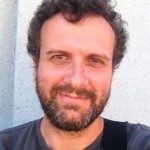Link to Pubmed [PMID] – 16155201
Protein Sci. 2005 Oct;14(10):2735-40
We introduce a novel approach to estimate differences in the beta-aggregation potential of eukaryotic proteomes. The approach is based on a statistical analysis of the beta-aggregation propensity of polypeptide segments, which is calculated by an equation derived from first principles using the physicochemical properties of the natural amino acids. Our analysis reveals a significant decreasing trend of the overall beta-aggregation tendency with increasing organism complexity and longevity. A comparison with randomized proteomes shows that natural proteomes have a higher degree of polarization in both low and high beta-aggregation prone sequences. The former originates from the requirement of intrinsically disordered proteins, whereas the latter originates from the necessity of proteins with a stable folded structure.

